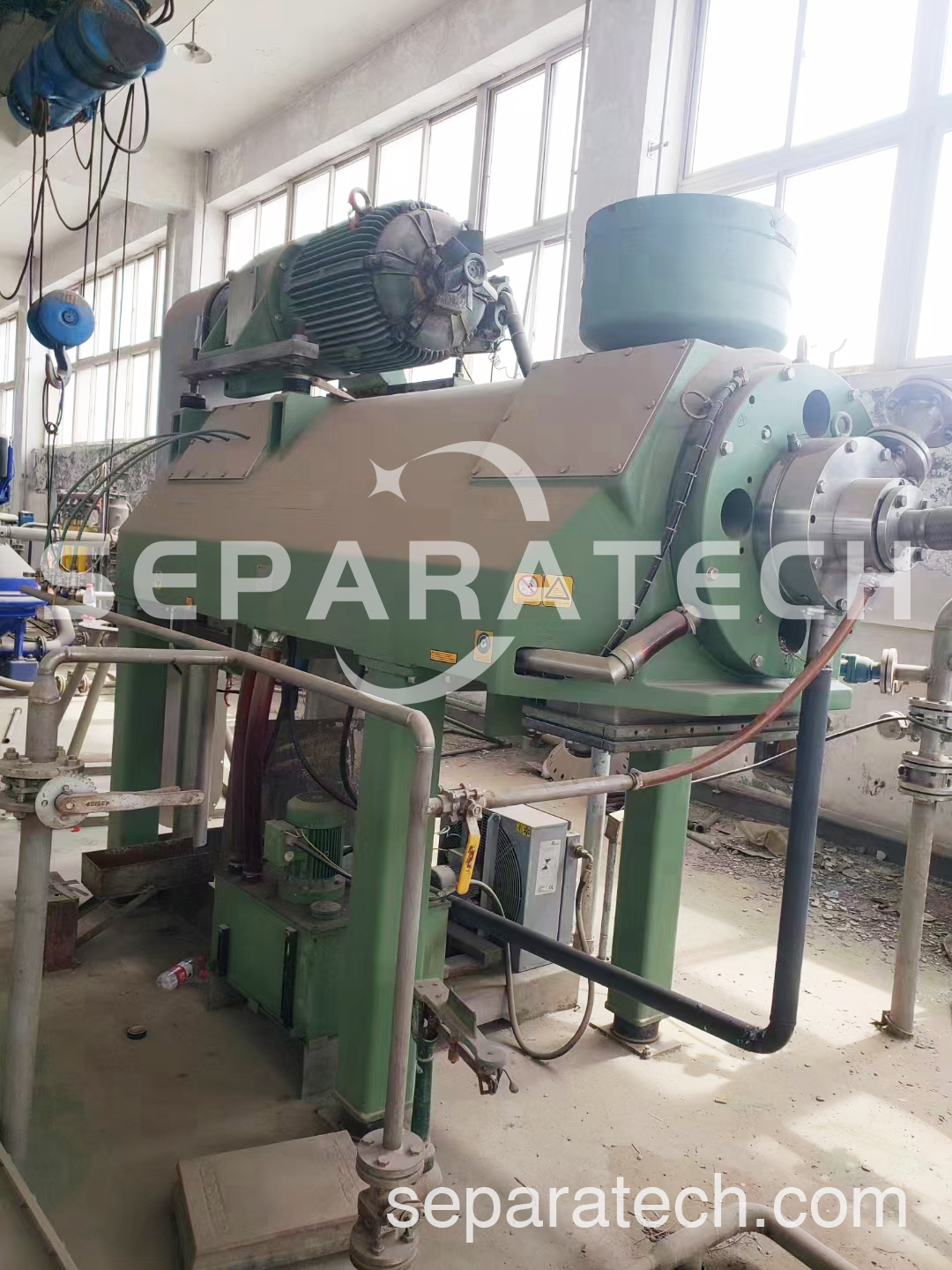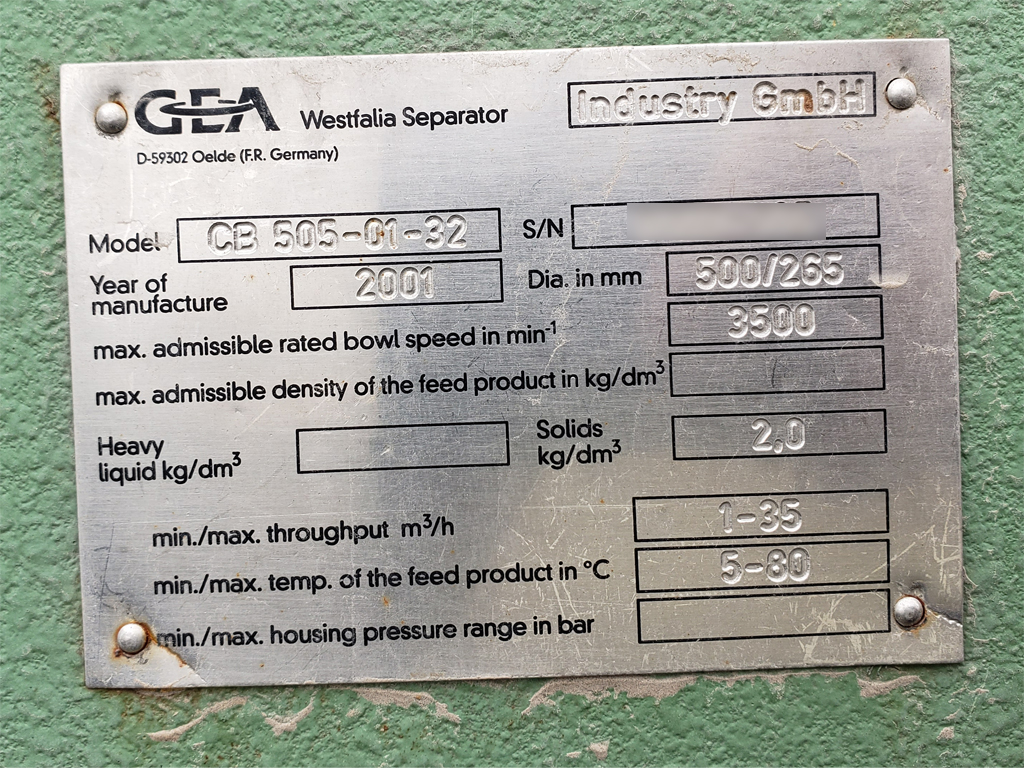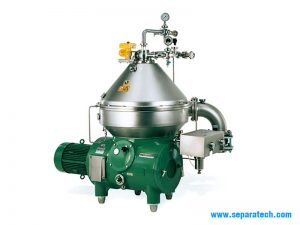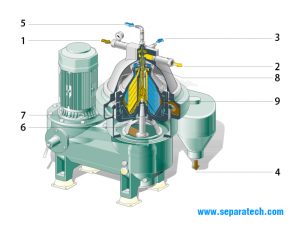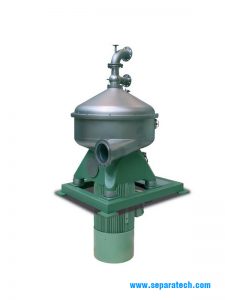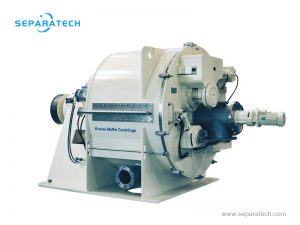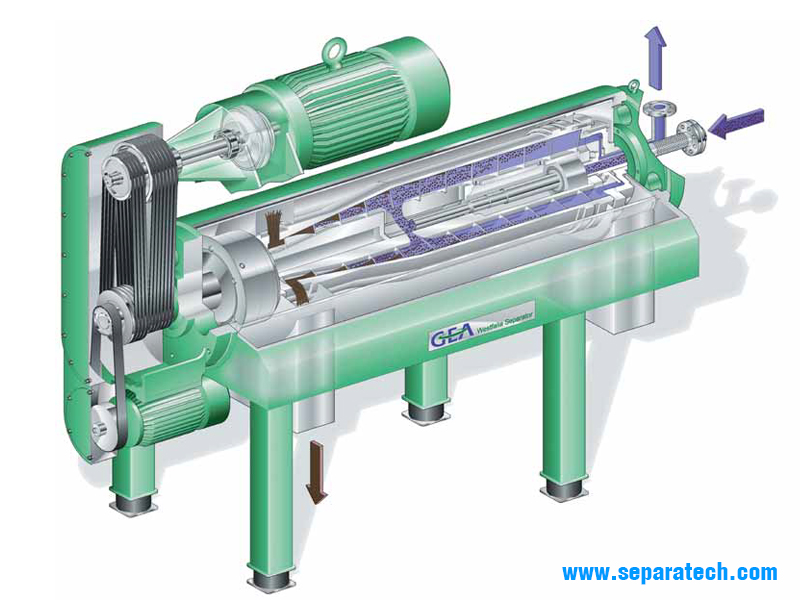
Technical specifications
Model: CB505-01-32
Manufacturer: GEA Westfalia
Manufacturing year: 2001
Bowl diameter: 500 mm
Bowl speed: 3500 rpm
Min. feed temperature: 5 °C
Max. feed temperature: 80 °C
Min. throughput: 1 m3/h
Max. throughput: 35 m3/h
The main benefits of CB505-01-32 Decanter Centrifuge
-Variable drive, torque-dependent differential speed regulation for constant and extremely high solid concentration even in conjunction with fluctuating feed concentrations
– Adjusted drive concepts: 3-phase motor with frequency converter for regulating the bowl speed or motor for controlled torque starting
– Automatic lubricating oil circulation: long bearing lives due to cooling lubrication and filtering
– pond depth regulator: Pond depth adjustment while the machine is running
– Paring disc: Hydro hermetic operation and energy saving due to small diameter
– Maximum dewatering combined with maximum separating efficiency
– Optimum pond depth for optimum dewatering and low energy consumption
– Material and sealing systems matched to the specific product
Applications
In the process of recovering starch and protein from potatoes, CB505-01-32 Decanter Centrifuge is used for separating the fruitwater, dewatering the coagulated protein and for dewatering the pulp. Sophisticated drive systems ensure a high dry matter content. The 2-gear drive developed enables the differential speed to be smoothly adjusted to the quantity of protein or starch to be separated. This is the only way in which maximum dewatering and separating capacities can be achieved. The pond depth of the CB505-01-32 Decanter Centrifuge can be adjusted while the machine is running. This is an enormous advantage which saves a lot of time and expense because, if this system is not used, decanters would have to be shut down to change the pond depth, in order to ensure a constant discharge concentration when operating conditions are fluctuating. In addition, the simple and optimum facility for adjusting the pond depth can also be used for increasing the relative clarifying area; this means that extremely small particles can be separated during the protein recovery process itself, and excellent separating efficiencies can be achieved. As the clarified liquid is discharged under pressure, the bowl chamber is hydrohermetically sealed.
